Of all the places your feet can take you...
make sure a few of them are among cherry blossoms.
Nature photo of the day: spring has risen.
this isn't Japan and the blossoms aren't pink yet the cherries will be plump and red when nature decides who will survive and who will fall to the ground in the mass-produced petals of white littering the grass with compostable confetti to celebrate the birth of spring - Cheryl M.
If you never get a chance to travel to Japan to see the beloved cherry blossoms, this is a reminder that cherry blossoms are abound in many parts of the world, including our neck of it in Maramureș County.
This year, on Easter day, they opened up to a rare blue sky, complete with sunshine and a plethora of pollinators.
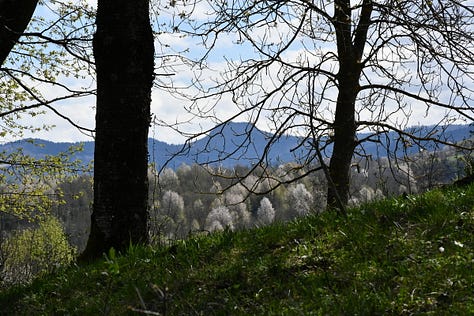
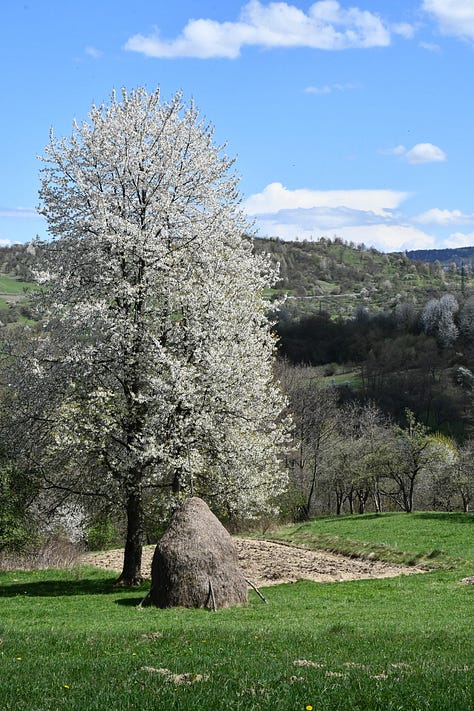
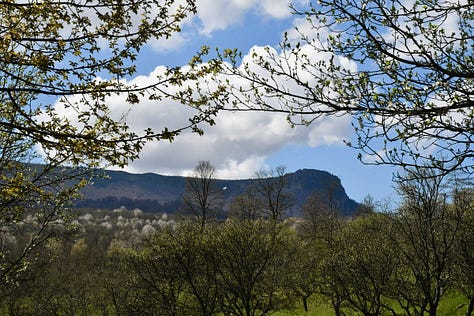
And so, we too, following our own recommendation of getting outside every day, went on a two-hour walk among the trees. We visited a venerable elm, took far too many pictures of blossom-coated branches and fed some local ants a few bites of our kalács.
According to Wikipedia: The Hungarian kalács (pronounced [ˈkɒlaːtʃ]) is a sweet bread very similar to brioche, usually baked in a braided form, and traditionally considered an Easter food. Until the end of the 19th century, the preparation of kalács was similar to that of everyday bread; the difference was in the shape, and in the better/quality flour used for the kalács. Nowadays kalács is prepared from dough enriched with milk and eggs. It is baked in an oven or brick oven, sometimes directly on the stones of the brick oven, or on a baking sheet.
Kalács is part of the traditional Easter menu in Hungary and in general among Hungarians, often consecrated together with ham in Catholic churches. Kalácskoszorú is the circular form of the kalács which is most commonly made for Easter. Another version is also the kalács-kifli. Kalács is also common inside a komatál, a traditional gift plate, given to someone as a gesture of friendship. In the Szeged region at All Saints unfilled kalács was baked called All Saints' Kalács (mindenszentek kalácsa, kolduskalács = Beggar's Kalács), which was given to beggars at the gate of the graveyard. Also kalács was given to beggars praying at the graveyard's gate in Csallóköz to prevent the dead from returning. Giving kalács to beggars is the Christian form of the pagan tradition of treating the dead.
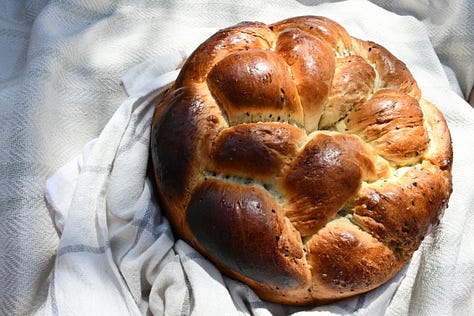
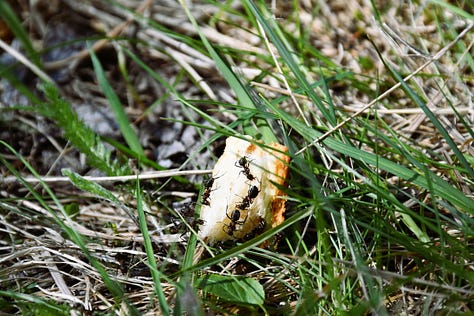
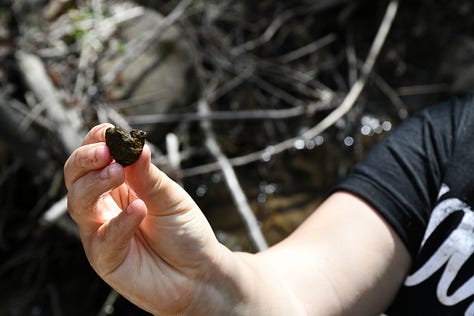
The ants accepted the offering with delight, taking it away piece by piece, seemingly very happy with an edible gift from out of nowhere. In return, Csermely found a nearly heart-shaped rock in the creek, and we also saw an almost heart-shaped cloud in the sky.
Some days, nearly and almost is enough. This is one of them.
As for the journal prompt of the day:
Describe how the changes you see in nature during spring mirror changes in your own life.
This is a more difficult prompt than usual and I am very curious to see someone answer it. Are you going with the flow, or are you letting something go easily and lightly? Do you have some creative project brewing in your mind that you need to bring to fruition?
Wishing you a happy spring with the promise of much fruit on the way,
The official Earth Day (April 22) is coming up soon, but you can
Make Earth Day Every Day here at the Daily Dose of Nature.


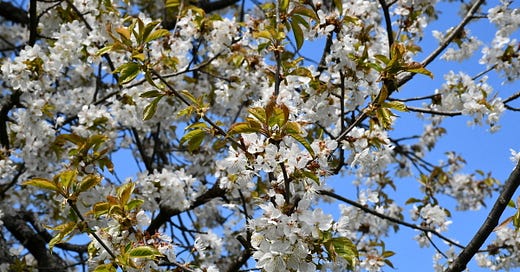




Wow that is a hard journal prompt! And a beautiful post. ❤️❤️❤️ Spring is mirrored in my life now by growing hope, which has sometimes ebbed, but is now growing like the promise of cherries.
I loved your poem!
What a great way to put it:
"littering the grass
with compostable confetti
to celebrate the birth of spring"
This image will stay with me for a long time ... 🌸